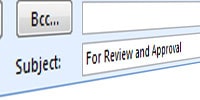How to pitch an article
January 6, 2017
By Jenny Higgons
Companies and individuals often wonder how to get press coverage in magazines, newspapers, and other media outlets. I’ve spent many years on both sides of that fence — as a freelance writer, and as a writer and editor at both national and regional magazines and a major daily newspaper. Here’s a primer.
It all starts with “the pitch” to an editor or writer. (For brevity’s sake, I’ll use only “editor,” but you should think “editor and/or writer.”) Your pitch should quickly and succinctly summarize the main focus of the story you’re trying to get published. Its mission is to pique an editor’s interest and explain why the story you’re suggesting would be of a good fit for that publication’s readers. This is your story’s unique angle.
Two examples:
The pitch: Eric Kuhn was just promoted to the CEO of Jackson Electronics, Inc., which is a Fortune 100 company.
The angle: Eric Kuhn never went to college.
The pitch: Joe Smith, the president of Katonah Gas & Oil, just set the world record for the fastest ascent of Mount Everest.
The angle: Joe Smith has only one leg.
HIT THE MARK

Starting off a correspondence with “Dear Finance Editor” is akin to the dreaded “Dear Occupant.” Scour your social and business networks for anyone who could introduce you to an editor with the publication you’re targeting. Even if she’s not the correct editor, she could tell you who the correct editor is (including his/her name, phone number and email, thank you very much). If not, present your story to who is, or at least seems to be, the most appropriate editor for your topic.
Study a magazine or newspaper’s masthead. If the publication has a health editor, she’s your target for that new dental drill. If your choices are only a few editors with ambiguous titles, go for the features editor. Use Mr. or Ms. when addressing him/her.
Customizing a cover letter so it dead-on targets a specific outlet can work in your favor. For example, mention that you noticed that the outlet had covered a particular topic in a past issue, and you thought that your related topic might be of interest. The downsides to this approach are that it may take quite a bit of time to find a related topic, and even when you do, the editor may say, “Thanks, but we’ve been there, done that.”
So is customizing a cover letter to various outlets worth it? It is if you are limiting your efforts to three or four of them. But if you target more than that, then all of that time and effort you put into the project may very well not pay off. You’ll have wasted time and be quite frustrated.
THE PHONE PITCH
Get straight to the point. It’s obvious that you called because you want something. Your first words should be, “Hello, Mr. Jones, my name is Tom Willard. I work for the Welles Corporation in Dallas. My company has just invented a tool that will change the face of oil drilling. Do you have two or three minutes to hear about it for possible story consideration?”
Convey as much with the fewest possible words. Saying “two or three minutes” assures him that you’re not going to drone on. Give the editor something that will make him say, “Wow, I never knew that” or “That’s a great story angle.” All editors appreciate when their job is made easier.
Avoid getting flustered by writing down exactly what you want to tell the editor, but don’t make it sound like you’re reciting it from a piece of paper. You don’t want to hem and haw your way through the conversation. Cold calls are tough, but this will make it easier. I’ve done it many times. It works!
Be enthusiastic. This will show you have confidence in your story idea and maybe even up the editor’s interest.
The editor might ask you to tell him more about your story topic. Don’t be one of those people who make pitches that aren’t fully developed. Be prepared to smoothly expound on your pitch. If you feel the need, write that down, too. (Again, no hemming and hawing.)
If the editor says he’s too busy to speak with you at the moment — especially if he’s on deadline — ask him to suggest a better day and time to call back, adding that you’ll send him a press release in the meantime. If he immediately says no to your pitch, respect his right of refusal and move on.
THE EMAIL PITCH

Format the body of your email it as a regular business letter. Demonstrate that you mean business. You and the editor aren’t instant pals. Many business emails these days are too casual.
Place no more than three paragraphs in the body of the email, and include any additional information — a press release, relevant back-up material, a full press kit — as Word attachments. As with a phone pitch, convey as much as you can in the fewest words possible.
And about those press releases … Some editors recoil in horror at pieces that are 900 words long. “They expect me to wade through all of that?” they mutter to themselves. They want a press release to pique their interest, not shut it down. A short, succinct release that’s formatted with paragraphs and bullet points is their friend.
While they’re the exception, some editors like a super-long press release. If it’s written well enough, they can copy and paste the information they choose, and violà — they have an instant story.
So how do you figure out which editors prefer which? My suggestion: Send the short ones to consumer-based outlets and the longer ones to trade and business outlets. And as with all press releases, make them reader friendly by having each paragraph no more than six sentences and using 1.5-line spacing.
Don’t attach gifs or jpegs of your company’s logo or other branding images. The editor will click on them, see that they have no pertinent value and get annoyed.
Sign the email with your name, phone number, and email address. Make it easy for the editor to contact you in case he doesn’t want to respond right away. Include your company’s full address and website URL.
Thinking about snail-mailing your pitch? Snail-mail it only when a publication’s submission guidelines call for it — or your pitch has more than just paper components, such as product samples or fun promotional doodads. Who doesn’t love getting free stuff?
A PACKAGED DEAL
Magazines and newspapers are big on “packaging.” A story package is a main story that has added components, such as a sidebar, graphics, or other breakout boxes that enhance the main piece.
Example: The main story is about a new concierge daycare service for dogs in Manhattan. Sidebar 1 is the names of and contact information for upscale pet-supply stores in Manhattan. Sidebar 2 is a map of Manhattan’s best dog parks. Sidebar 3 is a chart of the most popular breeds of dogs. Put your sidebar ideas in the body of your introduction email.
DO IT YOURSELF?
Thinking of submitting a pre-written story? There are pitfalls. It’s possible that the story:
• Won’t be in that outlet’s “voice”
• Has a slant the outlet doesn’t like
• Will look like it obviously wasn’t written by a professional journalist
• Will make the recipient wonder if the story is “waiting for a bite,” simply being passed around in hopes that somebody, anybody, will express interest.
But as with a long press releases and their chances of an editor being able to easily turn them into “instant articles,” your best possibilities lie with trade and business outlets. And as for consumer outlets, 99 out of 100 of their articles are written by their staff and professional freelance writers. So in the end, unless you’re aiming at trade and business outlets, stick with the press releases and don’t bother submitting a pre-written story.
BEFORE YOU HIT “SEND”
Check the document(s) for errors in spelling, punctuation, grammar and usage. English is a tricky language; it’s easy to get tripped up by even the smallest things. No one is immune! Try to get one or two other people to proofread it.
THE FOLLOW-UP
Whenever you call an editor, even if you spoke to him for 15 minutes three days ago, remind him of your name, company and the topic of your story pitch. Sorry, but you’re probably just one of 20 or more people who’ve called him in the past few days. You’re doing him a huge favor by resetting the story, and you’re getting another valuable chance to push your story to the forefront of his mind.
If you’ve sent an email and gotten no response within three days, follow up with a phone call. “Hi, Mr. Jones, this is Bill Weiss from Jericho Industries. I’m following up on a story pitch I sent to you three days ago, and I’m wondering if you’ve had a chance to read it?” If you get his voice-mail, say the same thing, add that you’ll call back in a day or two, and provide your phone number. If the editor has left a cell number for urgent matters, don’t call it. Your matter may be urgent to you, but it’s not to him.
No response after a week? Make the same call every other day for about 10 days. =Still nothing from him? He’s probably not interested. Move on. If he does call you back after your third or fourth voice-mail, it may be out of guilt (guilt does work!) or just to get rid of you. Nonetheless, you’ve got his ear! Continue your pitch!
LASTLY
The unfortunate state of our economy has forced many editorial staffs to be downsized. Some editors now do the work of three. This makes them ultra-busy (and occasionally, crabby). If your phone calls and emails get brusque responses, don’t take it personally. Remove the emotion. Business is just business. On to the next publication!































